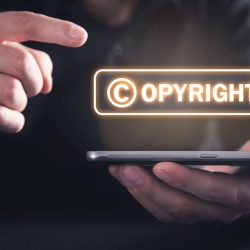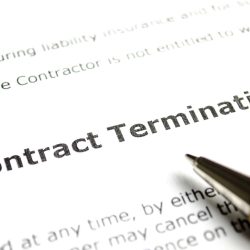My business holds a federally registered trademark, but someone else owns the “.com” domain containing my mark. Sound familiar to you or a “friend”? Domain names are arguably the most sought-after online property because of the ease and quickness by which any web user can acquire a domain name from popular hosts like GoDaddy. The common sense approach to this problem would be to search for the owner of the domain and reach out to them directly, but the likelihood of your receiving any response is small – with any action taken being even smaller. Fortunately, after having successfully filed hundreds of trademarks for our diverse group of clients, we have been able to identify and utilize effective means to obtain a domain name held by a “cybersquatter,” including the governing laws providing the grounds for our clients to obtain their rightful intellectual property.
What is “cybersquatting”?
Cybersquatting is the increasingly common practice employed by opportunistic individuals and entities of purchasing domain names in the hope of staking their claim to a popular company name idea or title. More often than not, attempting to access the domain through a web browser yields no result primarily because there was never any intent to utilize the domain for any commercial purpose. Fortunately, for federal trademark[1] owners and small businesses finding themselves having to pay lots of money for the domain name best associated with their mark, there are two routes that people or companies affected may take to combat this problem: (i) the Anticybersquatting Consumer Protection Act (ACPA)[2], and (ii) through the Uniform Domain Name Dispute Resolution Policy (UDRP) provided by ICANN[3].
(i) Understanding the Anticybersquatting Consumer Protection Act (ACPA)
Under the ACPA, cybersquatting is the “practice of registering, using, or selling a domain name containing language that is identical or similar to a current trademark owner’s mark with a bad faith intent to profit from the domain name.” Critical to this definition are the factors a court may use to determine if a domain name transaction is conducted “in bad faith”, counting for and against.
A domain name transaction is unlikely to be considered in bad faith if:
- the registrant herself has any trademark or IP rights in the name;
- the domain name contains the legal or nick- name of the registrant;
- the registrant used the domain name in connection with the good faith offering of goods and/or services; or
- there is lawful non-commercial or fair use of the mark in a website under the domain name.
On the other hand, a domain name transaction is likely to be considered in bad faith if:
- there is intent to divert a site that could harm the trademark owner’s goodwill-either for commercial gain or with intent to tarnish by creating likelihood of confusion as to source, sponsorship or affiliation, or endorsement of the site;
- there is an offer to sell the domain name without having used, nor having an intent to use, the domain in the bona fide offering of goods or services, or there exists a prior pattern of such conduct;
- the registrant intentionally provides misleading contact information in the domain name registration application, or has a history of such conduct;
- there exists a warehousing of multiple domain names that appear to be identical or confusingly similar to distinctive marks or dilutive of famous marks, without regard to the goods or services being provided; or
- the mark (not the domain owner’s mark) is particularly distinctive or famous.
Some of these factors are actionable under the Lanham Act, but that a softer qualification for purchasing or registering a domain is that there be a bona fide intent to launch goods, services, or a business – even if those plans never come to fruition. However, per subpoint 5 above, if a domain registrant sits on a mark that he or she knows to be famous and tied to another’s validly registered trademark, a claim for “bad faith” becomes stronger.
(ii) Understanding the Uniform Dispute Resolution Process (UDRP)
The UDRP administered by ICANN currently applies to the top-level domains (TLDs) of .biz, .com, .info, .org, .net, and a few country code domains like .ac, and .mx. The definition of cybersquatting provided by ICANN is a “bad faith registration of another’s trademark in a domain name,” so traditional trademark rules related to unregistered “common law” and federally registered trademarks apply.
One of the big differences between the UDRP and ACPA is that the entire dispute resolution proceeding is conducted online, is generally resolved within 60 calendar days of the first filing, and is mandatory for TLDs contracted with ICANN (including “.com”). Once you or your counsel determine that a UDRP action is appropriate or necessary depending on the responsiveness of the current domain owner, the process begins by filing a complaint and sending a copy to the respondent (the current domain holder). The UDRP is generally lauded for its effective and timely dispute resolution process, and we have found that our trademark clients value its efficacy.
For more information and personalized guidance based on your circumstances, or if you are ready to commence an action through the UDRP, please speak with our technology attorneys by emailing us at info@carbonlg.com or call our office at (323) 543-4453 to schedule a consultation.
[1] Note that unregistered or “common law trademark” holders may be able to assert similar claims, but that their rights are limited to the outcome of dispute resolution (with little basis in codified federal law).
[2] 15 U.S.C. §1125(d) under the Lanham Act






